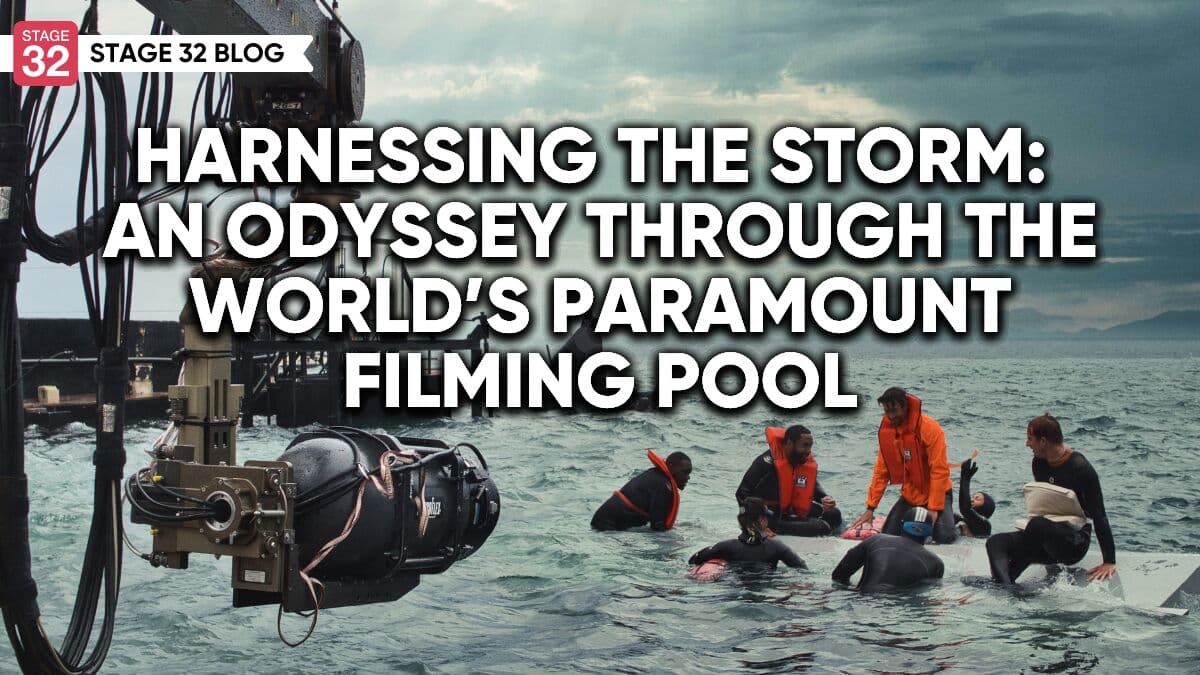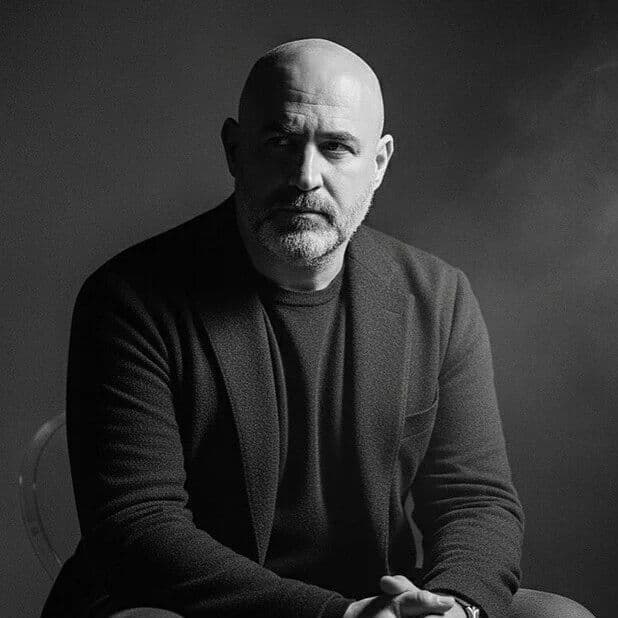Harnessing the Storm: An Odyssey Through the World’s Paramount Filming Pool

Harnessing the Storm: An Odyssey Through the World’s Paramount Filming Pool

*Jean Pierre co-wrote this piece with his business partner, Vadim Fortunin.
Cinema’s magic lies in its power to whisk audiences into uncharted realms. The grandeur of open seas and the mysteries of underwater abysses often beckon filmmakers, yet capturing such scenes is no small feat. The wild temperament of natural waters and the ensuing logistical quagmires are often stumbling blocks. However, nestled in the heart of the Mediterranean, Malta emerges as a cinematic sanctuary, offering the enchantment of the aquatic world and the steadiness filmmakers yearn for through its state-of-the-art water tank.
Not Without Hope... And A Water Tank
Malta is a cinematic paradise for anything related to water shooting. With a generous 40% rebate on both above and below-the-line expenses, Malta unfurls the red carpet to the world’s creators.
At Malta Film Service, we extend this warm invitation and always promise to uphold a legacy of excellence in spearheading cinematic productions. Our latest collaboration on Joe Carnahan’s "Not Without Hope," starring Zachary Levi, attests to our tenacity in navigating through challenges, ensuring projects not only see the light of day but do so within budget and schedule. The saga unfolds with a harrowing maritime mishap, a tale of survival against the odds off the Mexican coast.
This narrative voyage demanded a marriage of meticulous planning and adept execution to authentically portray the survival-driven storyline. Harnessing the seasoned expertise of our team, we steered through the intricacies of this demanding shoot, mitigating challenges and orchestrating a seamless transition from storyboard to screen. The result was a timely, budget-compliant project completion, a testament to our ability to honor our commitments amidst demanding scenarios.
We recently had a conversation with Alan Cassar, a seasoned member of our team with an extensive portfolio. His experience spans a variety of notable projects including:
"The Foundation"(2020) "The Last Voyage of the Demeter" (2023) "The Incredible Story Of Rose Island" (2019) "The Raft" (2019) "Das Boot" (Seasons 1 to 4)
What Alan Had To Say Regarding His Involvement In The Project "Not Without Hope":
"This project posed a significant challenge for both me and my team. Our journey began with exploring a myriad of approaches on how to execute certain demanding scenes, including the capsizing of the boat, several months in advance. Meetings were scheduled and numerous discussions ensued, as we tirelessly sifted through various options. Our unwavering resolve was to employ practical effects, merging the expertise of the Water SFX Department at the Malta Film Studio with the skills of the stunts and marine departments.
Every day and night brought forth a new setup as envisioned by the director. The storm sequences in this project rank among the most intense I've ever worked on. The level of realism employed, coupled with the intensity directed towards the actors (under thorough supervision and control), was nothing short of incredible. As I often remark, when recreating a storm of this magnitude, the caliber of actors becomes secondary. Place anyone at the heart of such a storm, and their reactions will be instinctive. They won't merely act; they will respond to the storm's fury as if their lives depended on it, making the scene utterly authentic and electrifying."
Innovative Filmmaking
Innovative solutions were a hallmark of this project, extending beyond just the camera department. The narrative unravels amidst a tempest, and both the director and cinematographer aspire to capture the most colossal waves possible for a heightened dramatic effect. After extensive brainstorming sessions spearheaded by Malta Film Service and involving some of the foremost experts in controlled water filming from around the globe, a novel solution emerged: enclosing the filming area with 40-foot containers filled with cement blocks, submerged beneath the water's surface. This arrangement caused the waves to rebound off the container walls, significantly amplifying their size and intensity. This ingenious method yielded a profoundly powerful and theatrical storm effect, helping to bring the director's and cinematographer's vision to life in a most striking manner.
Another intriguing aspect of our project is the utilization of Sony Venice cameras for all underwater shots, housed in the renowned HYDROFLEX® Aquacam - one of the best underwater housings globally. We opted to leverage modern technology, foregoing traditional underwater cinematographers. The cameras were adeptly mounted on cranes equipped with HYDROFLEX® HydroHead and HYDROHEAD® UW Remote Head attachments.
A notable mention is the unique telescopic CHAPMAN Hydrascope Crane 32 that we employed, one of only a handful available worldwide. This crane boasts a distinctive feature: its ability to telescope both above and below water, facilitating more dynamic and visually stunning camera movements. This setup empowered our cinematographer to orchestrate the frame from land, enabling a wide range of camera movements unrestricted by water or the necessity for underwater operators. It significantly contributed to achieving the director's vision of maintaining camera alignment at the actors' eye level in the water, occasionally immersed by waves, thus enhancing the immersive and authentic visual narrative of our scenes.
Planning For Water Stunts
The choreography of "Not Without Hope" reflects the meticulous planning required in executing water stunts. A blend of local and South African expertise breathed life into a storm-tossed sea, showcasing a fusion of technical and creative mastery.
Around the water tank, a technological fortress hummed tirelessly. From towering construction cranes to a uniquely engineered rain system by Maltese mavens, every element worked in synchronization to ensure a harmonious marriage of nature and machine.
Our ethos at Malta Film Service centers around safety, particularly on stunt-heavy days, providing a controlled milieu to animate the tumultuous sea narratives. This tale underscores the essence of collaboration and technical innovation, casting Malta not just as a filming locale, but as a cherished collaborator in the cinematic odyssey.

The Saga Of Malta's Filming Pools
But how did Malta hone such expertise in aquatic cinematography? The genesis traces back to 1963, with the Malta Film Facilities near Fort Rinella, the brainchild of British special effects maestro, Jim Hole, and Maltese construction virtuoso, Paul Avellino. Their foresight led to a shallow-water tank, a bulwark against tides and storms, heralding Malta’s ingress into aquatic cinema.
The inaugural film, "The Bedford Incident" in 1964, set the stage for diverse genres to follow. The Large Exterior Tank, a behemoth cradling over two million gallons of water, echoes the boundless narrative potential. Today the architectural verve of the Malta Film Studios is mirrored in its diverse water tanks with constant investments in upgrading all tools and tricks. The Insert Tank, birthed in the mid-90s, and equipped with a dry camera room and a removable roof, is a testament to precision.
The saga of Malta's filming pools is an ode to the indomitable spirit of collaboration and technical innovation. We at Malta Film Service hope to welcome more producers who intend to explore the boundless narrative realms lurking beneath the serene surface of the waves.
Let's hear your thoughts in the comments below!
Got an idea for a post? Or have you collaborated with Stage 32 members to create a project? We'd love to hear about it. Email Emily at blog@stage32.com and let's get your post published!
Please help support your fellow Stage 32ers by sharing this on social. Check out the social media buttons at the top to share on Instagram @stage32 , Twitter @stage32 , Facebook @stage32 , and LinkedIn @stage-32 .
About the Author

Jean Pierre Magro
Producer, Screenwriter
Jean Pierre Magro represents the vibrant cultural fabric of Malta and the island's burgeoning film industry, constantly pushing the boundaries of what is possible in storytelling and production.








